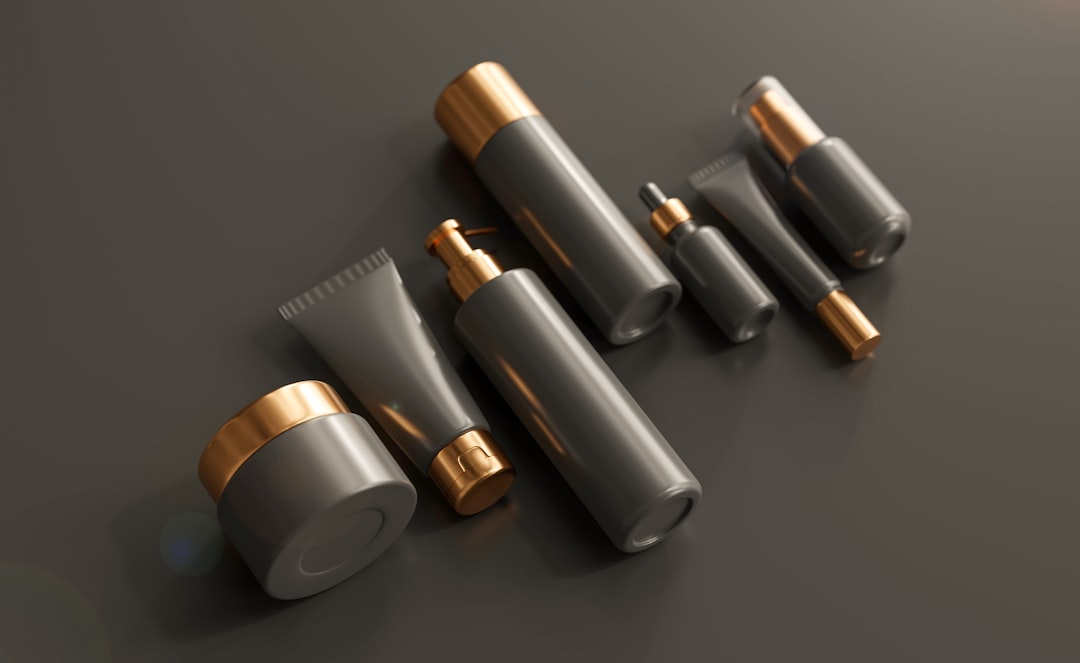Aftercare is a crucial aspect of any cosmetic or medical procedure, and understanding its significance can greatly enhance your overall experience and results. When you undergo a treatment, whether it’s a surgical procedure, a laser treatment, or even a simple facial, your body needs time to heal and recover. This is where aftercare comes into play.
It’s not just about following a set of instructions; it’s about nurturing your body and allowing it to return to its optimal state. By prioritizing aftercare, you can minimize complications, reduce the risk of infection, and ensure that you achieve the best possible outcome from your procedure. Moreover, aftercare is an opportunity for you to take an active role in your healing process.
By adhering to aftercare guidelines, you are not only protecting your investment in the procedure but also fostering a sense of responsibility for your own body. This proactive approach can lead to improved results and a more satisfying experience overall.
Remember, the journey doesn’t end when the procedure is over; it continues with the care you provide yourself afterward.
Key Takeaways
- Aftercare is crucial for optimal healing and results after a cosmetic procedure
- A proper skincare routine can aid in the healing process and maintain the results of the procedure
- Avoiding sun exposure is essential to prevent complications and maintain the skin’s health
- Managing discomfort and irritation with prescribed medications and gentle care is important for a smooth recovery
- Hydration and moisturization are key for promoting healing and maintaining skin health after a procedure
Proper Skincare Routine
Establishing a proper skincare routine post-procedure is essential for promoting healing and enhancing your results. Depending on the type of treatment you’ve undergone, your skincare regimen may need to be adjusted to accommodate your skin’s unique needs during recovery. Start by consulting with your provider about the best products to use.
They may recommend gentle cleansers, soothing serums, or specific moisturizers that are suitable for your skin type and condition. Following their advice will help you avoid irritation and support the healing process. In addition to using the right products, consistency is key.
Make it a habit to cleanse your skin gently twice a day, applying any recommended treatments or moisturizers afterward. This routine not only helps keep your skin clean but also allows for better absorption of healing ingredients. Pay attention to how your skin responds; if you notice any signs of irritation or discomfort, don’t hesitate to reach out to your provider for guidance.
By being diligent with your skincare routine, you can significantly enhance your recovery and achieve the radiant results you desire.
Avoiding Sun Exposure

One of the most critical aspects of aftercare is protecting your skin from sun exposure. After undergoing a procedure, your skin may be more sensitive and vulnerable to damage from UV rays. Direct sunlight can lead to complications such as hyperpigmentation, prolonged redness, or even scarring.
Therefore, it’s essential to take proactive measures to shield your skin from harmful rays during the healing process. To effectively avoid sun exposure, consider wearing protective clothing, such as wide-brimmed hats and long sleeves when outdoors. Additionally, applying a broad-spectrum sunscreen with a high SPF is non-negotiable.
Make it a part of your daily routine, even on cloudy days or when you’re indoors, as UV rays can penetrate windows. Reapply sunscreen every two hours if you’re outside for extended periods. By taking these precautions seriously, you can safeguard your skin and promote a smoother recovery.
Managing Discomfort and Irritation
| Technique | Effectiveness | Notes |
|---|---|---|
| Deep Breathing | High | Helps to relax and reduce tension |
| Progressive Muscle Relaxation | Medium | Can help to release physical tension |
| Mindfulness Meditation | High | Can increase tolerance to discomfort |
| Distraction Techniques | Low | May provide temporary relief |
Experiencing discomfort or irritation after a procedure is not uncommon, but managing these sensations effectively can make a significant difference in your recovery experience. Depending on the treatment you’ve received, you may encounter swelling, redness, or mild pain. It’s important to follow any pain management recommendations provided by your healthcare professional.
Over-the-counter pain relievers may be suggested to help alleviate discomfort, but always consult with your provider before taking any medication. In addition to medication, there are various home remedies that can help soothe irritation. Cold compresses can be particularly effective in reducing swelling and providing relief from discomfort.
Simply wrap ice in a clean cloth and apply it gently to the affected area for short intervals. Aloe vera gel is another excellent option known for its soothing properties; applying it can help calm irritated skin and promote healing. By being proactive in managing discomfort, you can create a more pleasant recovery experience.
Hydration and Moisturization
Hydration plays a vital role in the healing process after any cosmetic or medical procedure. Your body requires adequate fluids to support cellular repair and maintain skin elasticity. Drinking plenty of water throughout the day is essential; aim for at least eight glasses daily, or more if you’re active or live in a hot climate.
Staying hydrated not only benefits your skin but also helps flush out toxins from your body, promoting overall wellness. In addition to internal hydration, external moisturization is equally important. Your skin may feel dry or tight after a procedure, so using a high-quality moisturizer can help restore its natural barrier function.
Look for products that contain ingredients like hyaluronic acid or glycerin, which are known for their hydrating properties. Apply moisturizer regularly, especially after cleansing, to lock in moisture and keep your skin supple. By prioritizing both hydration and moisturization, you’ll support your skin’s recovery and enhance its appearance.
Monitoring for Complications
As you navigate through the aftercare process, it’s crucial to remain vigilant about monitoring for any potential complications. While most procedures have predictable outcomes, there is always a risk of unexpected issues arising during recovery. Be aware of signs such as excessive swelling, persistent pain, unusual discharge, or changes in color around the treatment area.
If you notice any of these symptoms, don’t hesitate to contact your healthcare provider for guidance. Keeping a close eye on your healing progress can help catch complications early on when they are often easier to manage. Documenting your recovery journey through photos or notes can also be beneficial; this way, you can track changes over time and provide accurate information to your provider if needed.
Remember that being proactive about monitoring your recovery not only ensures your safety but also contributes to achieving the best possible results from your procedure.
Resuming Regular Activities
After completing the initial phase of aftercare, you may be eager to return to your regular activities. However, it’s essential to approach this transition with caution. Depending on the nature of your procedure, certain activities may need to be avoided for a specific period to allow for proper healing.
For instance, high-impact exercises or strenuous physical activities might be off-limits initially to prevent strain on the treated area. Before diving back into your routine, consult with your provider about when it’s safe to resume specific activities. They will provide personalized recommendations based on your unique situation and the type of procedure you underwent.
Gradually reintroducing activities can help ensure that you don’t compromise your healing process while still allowing you to enjoy life as it returns to normal.
Following Up with Your Provider
Finally, one of the most important steps in aftercare is scheduling follow-up appointments with your healthcare provider. These visits are essential for assessing your progress and addressing any concerns that may arise during recovery. Your provider will evaluate how well you’re healing and whether any adjustments need to be made to your aftercare plan.
During these follow-up appointments, don’t hesitate to ask questions or voice any concerns you may have about your recovery process. Open communication with your provider is key to ensuring that you receive the best possible care and support during this time. By staying engaged in your aftercare journey and maintaining regular contact with your provider, you’ll be better equipped to achieve optimal results from your procedure while safeguarding your health and well-being.
In conclusion, aftercare is an integral part of any cosmetic or medical procedure that should not be overlooked. By understanding its importance and following recommended guidelines—such as establishing a proper skincare routine, avoiding sun exposure, managing discomfort, staying hydrated, monitoring for complications, resuming activities cautiously, and maintaining communication with your provider—you can significantly enhance your recovery experience and achieve the desired results from your treatment. Taking these steps will empower you on your journey toward improved health and confidence in your appearance.
For more information on understanding laser hair removal aftercare, you can check out the article on In Laser Hair Removal’s website. This article provides detailed information on how to properly care for your skin after undergoing laser hair removal treatment to ensure the best results. It covers topics such as avoiding sun exposure, using gentle skincare products, and following any specific instructions given by your technician. Be sure to visit their website for more helpful tips and advice on maintaining smooth, hair-free skin post-treatment.
FAQs
What is laser hair removal aftercare?
Laser hair removal aftercare refers to the steps and precautions that should be taken after undergoing a laser hair removal treatment. This includes caring for the treated area to ensure proper healing and to minimize any potential side effects.
Why is laser hair removal aftercare important?
Laser hair removal aftercare is important to promote proper healing, reduce the risk of complications, and maximize the effectiveness of the treatment. It helps to soothe the skin, prevent infection, and minimize any potential adverse reactions.
What are some common aftercare tips for laser hair removal?
Common aftercare tips for laser hair removal include avoiding sun exposure, using gentle skincare products, avoiding hot showers and baths, avoiding excessive sweating, and keeping the treated area clean and moisturized. It is also important to follow any specific instructions provided by the treatment provider.
How long does laser hair removal aftercare last?
Laser hair removal aftercare typically lasts for a few days to a few weeks, depending on the individual’s skin sensitivity and the intensity of the treatment. It is important to continue following aftercare guidelines until the skin has fully healed and any side effects have subsided.
What are some potential side effects of laser hair removal and how can aftercare help?
Potential side effects of laser hair removal may include redness, swelling, itching, and temporary changes in skin pigmentation. Proper aftercare can help to soothe the skin, reduce inflammation, and minimize the duration and severity of these side effects. It can also help to prevent infection and promote healthy skin regeneration.







